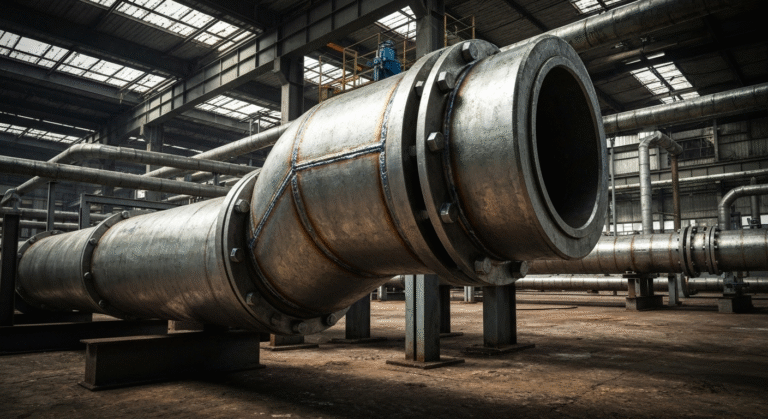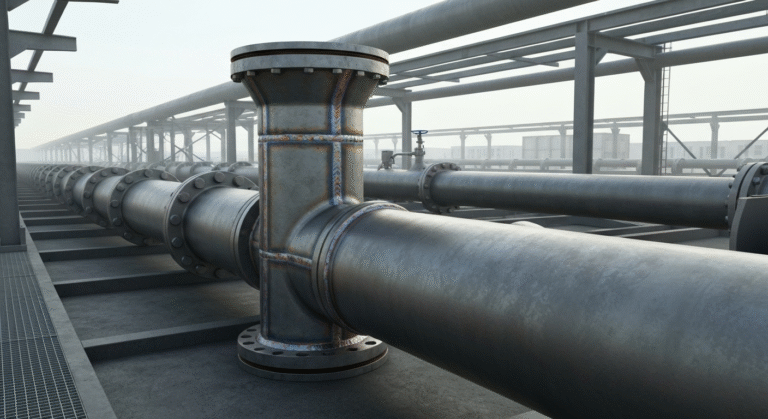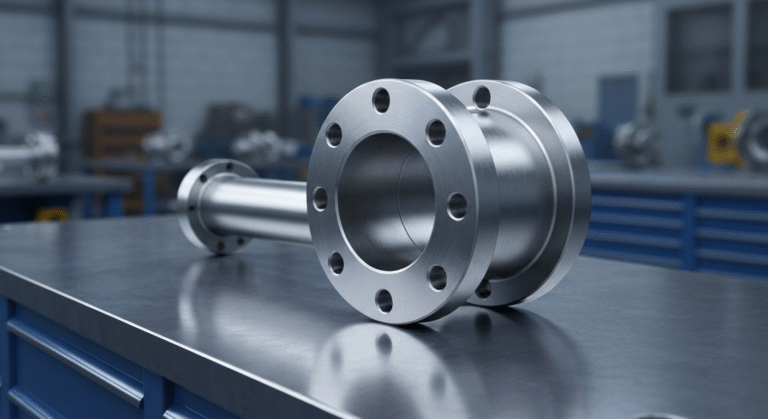-
Zone industrielle de Yinzhuang, comté de Mengcun, ville de Cangzhou, province de Hebei, Chine
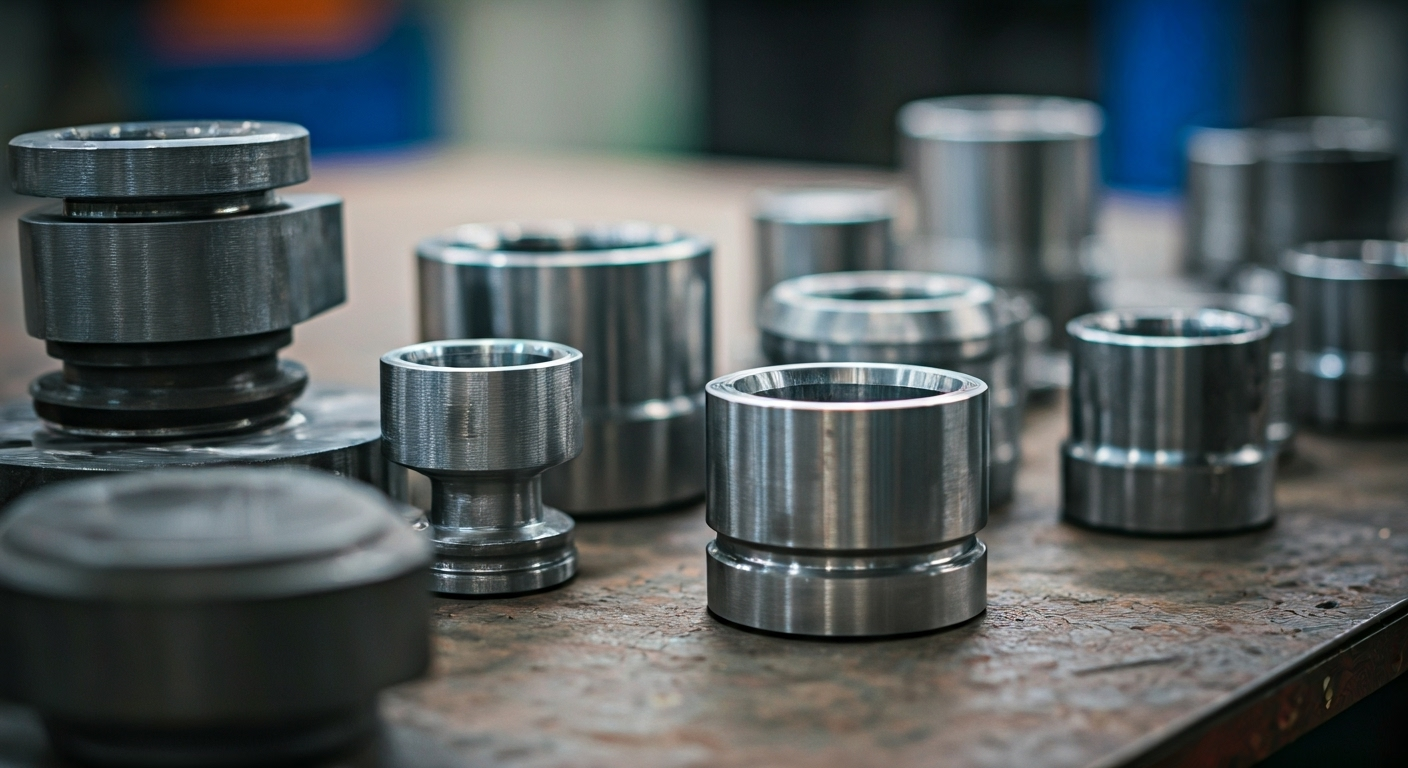
Raccords à souder bout à bout : Spécifications et normes industrielles
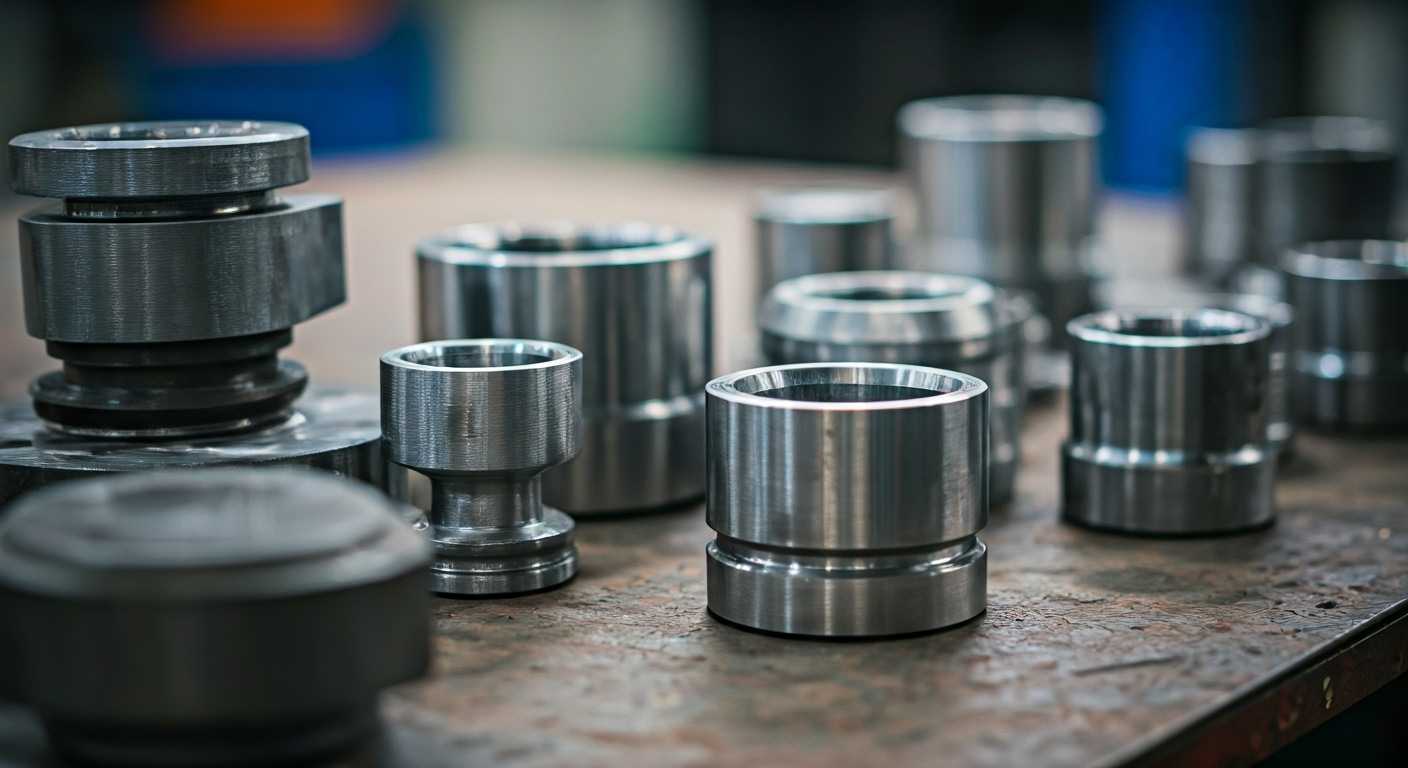
Faits marquants
- Butt weld fittings are essential components in piping systems, connecting pipes and fittings with a secure welded joint.
- These fittings are available in various dimensions, including thickness, diameter, and NPS, compliant with industry standards like ANSI and ASTM.
- Carbon steel butt weld fittings such as ASTM A234 WPB and stainless steel options ensure compatibility and durability.
- Popular types include elbows, reducers, tees, caps, and more, designed for specific applications.
- Manufactured according to industry-approved standards like ASME B16.9, ensuring precision and reliability in usage.
Introduction
Butt weld fittings play a key part in many industrial piping systems. They help connect pipes and fittings in a strong and secure way. These fittings use a weld process that creates a smooth and tough joint between each part. Most butt weld fittings are made to meet both ASTM and ANSI standards. You can find them in different shapes, like elbows, reducers, and tees. Because of their strong build, they work well in places where you need high pressure, careful measurements, and long use. In this guide, we will look at their main details, the materials they use, their size rules, and the main ways people use them in the industry.
Key Specifications of Butt Weld Fittings
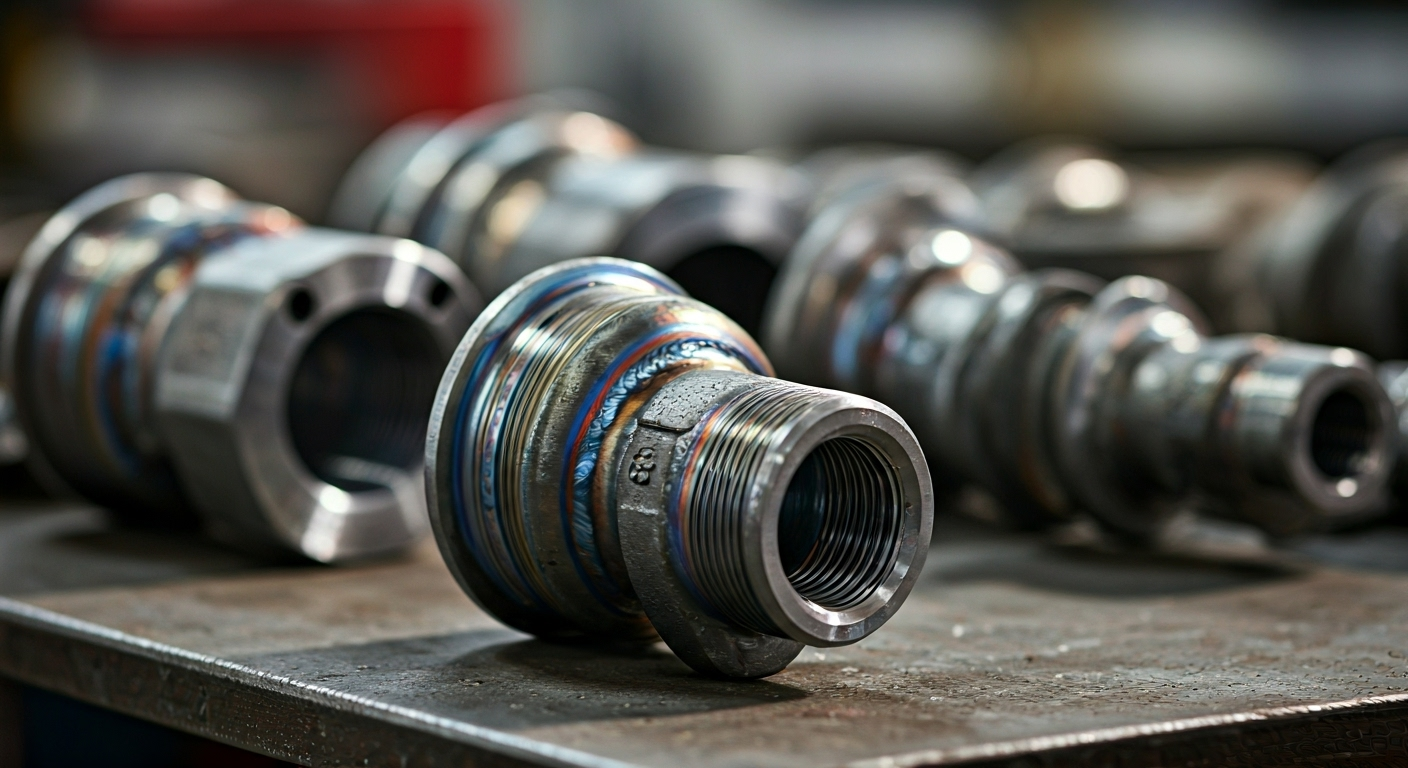
The specifications for butt weld fittings are mostly about their size and thickness. These fittings are made to match many uses in different industries. The diameters are measured with NPS (Nominal Pipe Size). They start at a small ½ inch and can be as big as 72 inches. The thickness comes in many schedule options like SCH 10, SCH 40, and SCH 80. This makes it good for many types of piping work, from low to high pressure. The standard sizes help all the fitting parts work together, so there are fewer problems.
Butt weld fittings can have either bevelled or plain ends. This is to help make the welding process easier and to get a better weld. They are made to follow the ANSI B16.9 rules. That means you get fittings that are made right and you can trust them. When you need to slow down the flow with reducers or change the direction with elbows, it is key to pick fittings with the right specs. Knowing about these features helps you pick the best fittings for your piping job.
Common Materials and Grades Used
A main benefit of butt weld fittings is that you can find them in many materials for different needs. Carbon steel butt weld fittings, like ASTM A234 WPB, are very popular. They are strong and safe to use. People often pick WPB-grade fittings for high-pressure and high-temperature jobs. They make sure you get good performance when things get tough.
Stainless steel butt weld fittings do not rust easily. This makes them great for places where there are chemicals or a lot of wetness. Some grades like ASTM A403 WP304 and WP316 give different levels of strength and mix of materials, including studs. You will see these used in food, drug, and ocean piping systems.
When special jobs call for more, you can choose alloy steel types, such as ASTM A234 WP9 and WP11. These fittings work well when the heat goes up high and you still need the steel to last. Picking the best material for fittings will help them last longer and fit well with other piping. Always make sure the fittings match the right ASTM standard.
Dimensional Standards and Tolerances
Dimensional standards ensure uniformity across butt weld fittings, making them adaptable for complex systems. These fittings follow ANSI and ASME guidelines, which mandate precise specifications for thickness, diameter, and NPS. The compatibility provided by these standards minimizes the risk of mismatched connections.
The diameters, measured using the Nominal Pipe Size (NPS), cover a wide range from 1 inch to 72 inches, while thickness adheres to specific schedules like SCH 10, SCH 40, SCH 80, and SCH 160. This broad spectrum provides versatility for various industrial setups.
Here’s a breakdown of typical dimensions:
Parameter | Range |
|---|---|
NPS (Diameter) | ½” to 72” |
Schedule Thickness | SCH 10 to SCH 160 |
Normes | ANSI B36.10, ASME B16.9 |
Using these tolerances ensures both precision and a secure, reliable connection.
Conclusion
To sum up, knowing about butt weld fittings and what they need is very important. It helps to be sure that your piping systems work well and stay safe. When you use the right materials and follow industry rules, you get good, strong results that last a long time. Elbows and reducers are common in these jobs, but each has its own use. Picking the right fittings is important and can change how well your system works.
If you want help or have any questions about our fittings, weld products, or how they fit into your piping, please contact us. We care about your project doing well and about your satisfaction. Talk to us today to get expert advice and support!
Long Radius 90 Elbow | Butt Weld Fitting | A234 WPB | Domestic
The Long Radius 90 Elbow in A234 WPB grade helps to change the flow of liquid in piping systems by making a smooth 90-degree turn. This long radius type is equal to 1.5 times the pipe’s diameter. Because of this, there is less turbulence, and it helps the system keep a steady flow.
A234 WPB fittings work well in tough, high-pressure, and high-temperature places. These fittings meet the ASME B16.9 standards and can be used in conjunction with hose applications, which means they are made with great care for important industries like oil, gas, and petrochemical plants.
This elbow fitting uses a weld joint. This provides strength and lasting service. Because it is welded, there is less risk of leaks. There are many size options to fit many piping needs. This makes it easy to use these fittings with other pipes or fittings.
Concentric Reducer | Butt Weld Fitting | A234 WPB | Domestic
A Concentric Reducer helps connect pipes of different sizes and keeps them lined up straight. For example, an A234 WPB reducer keeps the center of each pipe in the same spot, so the flow stays steady.
The WPB type is strong and works well in tough jobs where the pressure or temperature can change a lot. Good weld connections help stop leaks in the piping and give the pipeline extra safety.
These concentric reducers come in many sizes and thicknesses, including various adapters. They follow ANSI and ASME standards, so they fit well in complex piping systems. Companies use them when they need good performance and reliability, even in hard conditions.
Short 90 Elbow | Butt Weld Fitting | A234 WPB | Domestic
The Short 90 Elbow turns the flow in a pipe by 90 degrees. It has a small curve, about the same as the pipe’s diameter. Because of its small size, you can use it when there is not much space and you can’t fit bigger pipe fittings.
This elbow is made from A234 WPB carbon steel. The strong steel helps it hold up in tough places and high-risk jobs. It meets the ASME B16.9 standard, so it fits well with other fittings in a piping system and it’s easy to connect to the next part.
For jobs with high pressure, you weld this elbow in place. That helps keep things tight, stops leaks, and makes sure the flow is smooth. You can use this wpb elbow in many types of tough work areas where using less space is important.
Eccentric Reducer | Butt Weld Fitting | A234 WPB | Domestic
An Eccentric Reducer helps connect two pipes with different sizes, but it moves the centers out of line. This setup is important for drain piping. It can keep fluid from collecting in the line. This makes it different than a concentric reducer, which lines pipes up together.
When you use A234 WPB material for these reducers, they do well around high pressure and chemicals. These fittings are strong. So, they last a long time even when the job is tough.
Eccentric reducers made following ASME B16.9 are accurate. This accuracy helps you fit them with other piping. Since you need to weld them on, you can make sure there is no leak. Over time, this weld-on design keeps the fittings strong and secure.
[Blog would continue similarly…]
Long Radius 45 Elbow | Butt Weld Fitting | A234 WPB | Domestic
The long radius 45 elbow plays a big role in piping systems. It helps the flow stay smooth and keeps turbulence low. Built to meet A234 WPB standards, these butt weld fittings are strong and last a long time. When you choose the ones made in the country, you get better quality assurance. This makes them a good choice for many uses, especially with carbon steel.
You can get these butt weld fittings in different thicknesses and diameters. So, they work well for lots of jobs and help keep pressure ratings right. They also help cut down on wear for things like weld flanges and valves. When you install the fittings the right way, the whole system works better and lasts longer.
Reducing Tee | Butt Weld Fitting | A234 WPB | Domestic
Known for its simple look and strong build, the reducing tee plays a big part in butt weld fittings. This fitting is made to connect pipes with different sizes. It helps make the flow in the piping system smoother and keeps turbulence low. The reducing tee meets astm a234 wpb standards and is usually made from tough carbon steel. Thanks to the strong weld and the material, this tee works well when there is lots of pressure. People pick it for home use since it connects pipes firmly and keeps the system safe.
Capuchon | Raccord à souder bout à bout | A234 WPB
A cap butt weld fitting is used to close off the ends of pipelines. This gives a safe and strong seal. These fittings are made with high-quality A234 WPB carbon steel. They are built to handle many different pressures and temperatures. This means they last a long time and can be used in many ways. Their exact size makes it easy to install them with other pipe fittings, like flanges and valves. These butt weld fittings match ASTM and ASME standards. That’s why professionals in piping choose them, as they work well and meet all industry rules.
Tee | Butt Weld Fitting | A234 WPB | Domestic
A tee butt weld fitting made from A234 WPB is important for many piping systems. It gives great strength and lasts a long time. You can get these fittings in many sizes to fit different jobs. They meet strict rules from groups like ASTM and ASME. The design helps the tee weld fitting work well with both stainless steel and carbon steel pipes. This means that it fits in place and supports the whole system. When you pick the right thickness and diameter, the tee helps guide the flow. It plays a big part in making the piping work better and get good results with the weld and fittings.
Return Bend 180 | Butt Weld Fitting | A234 WPB | Domestic
A return bend 180 is an important part in a piping system. It helps the pipes change direction easily. These fittings are made to meet ASTM A234 WPB standards. With butt weld ends, they give a strong and leak-free connection. The design works with many sizes of pipe, in both homes and factories. Most of these fittings are made out of carbon steel. Because of this, they can stand up to high pressure in different places. Using return bend 180 the right way helps the flow work better and lowers the chance that something in the system will break.
Customer Service
Dedicated customer support is very important in the plumbing and piping industry. Our team is here to help you with questions about butt weld fittings, like what each type is for and if it is in stock. Our team knows a lot about these products, from carbon steel butt weld fittings to stainless steel options. They will help you get the right fittings and weld parts you need. We care about good service. We answer fast and share clear information, so you can work on your projects with no stress. Our help makes it easy for you to choose and use the right stainless steel or carbon steel butt weld fittings in your piping work.
Company
We focus on giving you top-quality pipe fittings. Our range of fittings covers all you need, including butt weld pieces like long radius elbows and tees. You can count on us for products that follow ASTM rules, making sure the A234 WPB and other items meet the high standards needed in many industries. We always use good materials such as stainless and carbon steel to make sure every fitting lasts and works well. Our team is ready to help you at any time with questions, giving you the best help for all your piping and weld needs.
Shipping & Returns
We work hard to make sure the shipping for your butt weld fittings is fast and smooth. Our weld fittings reach you on time and in good condition. We follow important industry standards, such as ASTM and ASME, so you get fittings that meet all needed specifications. If any butt weld fittings do not match what you expect, you can return them simply and easily. Your satisfaction is important to us. Our team will help you with returns, making sure you have a great experience from the moment you order to the day your fittings arrive.
Keep in Touch
Staying connected is very important. It helps build strong relationships and makes talking to others easier. When people ask about their needs or have questions, being there for them improves their experience. This is true when it comes to products like butt weld fittings or carbon steel pipe fittings. You can reach out in many ways. These include emails, phone calls, or even social media. Having these choices lets people talk in the way that works best for them. Keeping everyone updated on product specifications, industry news, or what fittings are in stock helps a lot. It can make their work on projects smoother and gives them more confidence. We want to make it simple for you to get in touch!
Let customers speak for us
Customer feedback is important for showing the quality of our service and products, especially for butt weld fittings and piping solutions. When clients give us their reviews, they talk about their experience with our A234 WPB fittings. This can be about items like long radius elbows and reducing tees. Their stories help us build trust and show we are open about how we work. They also prove our promise to provide good products and great customer care. When we listen to what people say, we do better in the way we make things and improve our butt weld fittings and piping work. This also helps us follow high standards in the weld industry.
Questions fréquemment posées
What are the primary industry standards for butt weld fittings in the United States?
The main industry standards for butt weld fittings in the United States are ASME B16.9 for factory-made fittings and ASTM A234 WPB. These standards help make sure that the fittings, weld, and materials are safe and good to use. They also help the fittings work well in different jobs and make sure they fit right. Following these rules is important for good performance and for making sure everything is reliable.
How are butt weld fittings tested for quality and compliance?
Butt weld fittings go through many tests to check quality and follow rules. These checks include looking at them, testing how much pressure they can take, and using non-destructive tests. All of these steps make sure the weld fittings meet astm standards, like astm a234 wpb. This is important for safety and trust in their work across different uses.
Quelle est la différence entre les réducteurs concentriques et excentriques ?
Concentric reducers keep the centerline even, so the pipes stay in line. Eccentric reducers have the centerline to one side. This helps the piping drain better and stops vapor pockets from forming. The decision to use one or the other depends on what your piping needs and how it will be used or set up.
Are there specific certifications required for manufacturers of butt weld fittings?
Manufacturers of butt weld fittings usually need to have certifications such as ASME, ASTM, and ISO. These certificates show that the fittings meet the right quality standards and follow safety rules. Because of these, customers can trust that the weld fittings work well and are safe to use.
How do I select the right butt weld fitting for my application?
To find the right butt weld fitting, you need to think about a few things. Check the type of work you will do. Make sure the material can work well with your pipe or system. You should also know the size you need and how much pressure the weld will need to handle. Look at the industry standards such as A234 WPB to be sure you get the best fit and performance for your needs. This will help you get the job done right.
